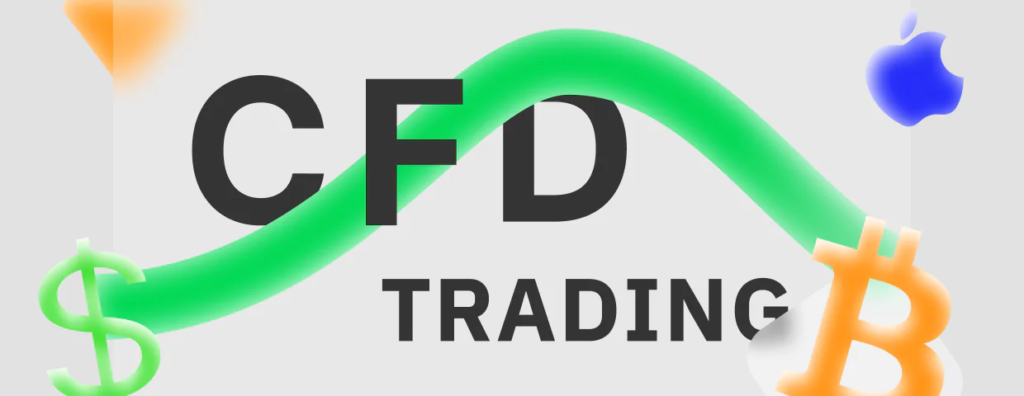
Yes, it is possible to make money with CFD trading (Contracts for Difference), but like other forms of trading, it carries significant risks due to leverage, market volatility, and the speculative nature of the practice. CFD trading allows traders to speculate on the price movements of financial instruments like stocks, commodities, indices, and forex without actually owning the underlying asset.
Everything you need to know in order to Make Money with CFD Trading
Here’s a breakdown of how you can make money with CFD trading, the advantages, and the risks involved:
1. What is CFD Trading?
- Definition: A CFD is a financial derivative that allows you to trade on the price movement of an asset (like a stock, commodity, or currency pair) without owning the actual asset.
- Profit Mechanism: You can profit by speculating on whether the price of an asset will go up (buy/long position) or down (sell/short position). If your prediction is correct, you earn the difference between the opening and closing prices.
- Leverage: CFDs are typically traded with leverage, meaning you only need to deposit a fraction of the full trade value (called margin). This allows you to control a larger position with less capital, potentially amplifying profits.
2. How to Make Money with CFD Trading
- Long Positions: If you believe the price of an asset will rise, you can buy a CFD (go long). If the price rises, you profit from the price difference between when you opened and closed the trade.
- Short Positions: If you believe the price of an asset will fall, you can sell a CFD (go short). If the price falls, you profit from the downward movement.
- Leverage: Leverage allows you to amplify your potential returns. For example, with a leverage ratio of 10:1, if you invest $1,000, you control $10,000 worth of the underlying asset. A small price movement in your favor can lead to significant profits.
- Hedging: Traders sometimes use CFDs to hedge existing investments. For example, if you own a portfolio of stocks and believe the market may decline, you could short stock index CFDs to offset potential losses.
3. Example of Making Money with CFD Trading
Suppose you believe that the price of Apple Inc. (AAPL) will rise from $150 to $160. You decide to buy 100 CFDs for Apple shares.
- Trade Entry: Buy 100 CFDs at $150 per share.
- Price Movement: The price rises to $160 per share.
- Profit Calculation: The price has moved in your favor by $10 ($160 – $150). Your profit is $10 * 100 CFDs = $1,000 (excluding any fees or commissions).
If you used leverage, the profit would be calculated based on the leveraged position, allowing you to earn the same profit with a smaller initial capital investment.
4. Advantages of CFD Trading
- Leverage: CFD trading allows you to control larger positions with a small amount of capital, which can result in significant profits if the market moves in your favor.
- Go Long or Short: Unlike traditional investing, where profits are made only when prices rise, CFD trading allows you to profit in both rising and falling markets. This flexibility can provide more opportunities to make money in various market conditions.
- Wide Market Access: You can trade CFDs on a wide range of markets, including stocks, indices, commodities, forex, and cryptocurrencies, all from a single platform.
- No Ownership of the Asset: Since CFDs are derivatives, you don’t need to own the underlying asset (such as actual shares or commodities), which means lower entry costs and easier access to diverse markets.
5. Challenges and Risks
- Leverage Risks: While leverage amplifies potential profits, it also amplifies losses. If the market moves against you, losses can exceed your initial investment. For example, a 10:1 leverage means that a 1% adverse move in price could wipe out your entire margin.
- Market Volatility: CFDs are highly sensitive to market movements, and volatile markets can lead to rapid price swings. Quick movements in the opposite direction can lead to substantial losses.
- Costs and Fees: Brokers often charge fees for holding CFD positions overnight (known as overnight financing or swap fees). Additionally, commissions, spreads, and transaction costs can eat into profits. These fees can accumulate, especially if you hold positions for long periods.
- Liquidity Risk: In less liquid markets, prices can gap or change rapidly, leading to slippage where you enter or exit a trade at a less favorable price than intended.
- Margin Calls: If the market moves against your position, your broker may require additional funds (a margin call) to keep your position open. Failure to meet a margin call can result in the broker closing your position, locking in your losses.

6. Strategies for Making Money with CFD Trading
- Technical Analysis: Many CFD traders rely on technical analysis to predict price movements. By analyzing price charts and using technical indicators like moving averages, support/resistance levels, and RSI (Relative Strength Index), traders aim to spot profitable entry and exit points.
- Trend Trading: One common strategy is to trade in the direction of the prevailing market trend. For instance, if the market is in an uptrend, traders may go long, while they may go short during downtrends.
- Range Trading: If a market is trading within a defined range, traders can buy CFDs near the support level and sell near the resistance level, profiting from the oscillations within the range.
- Scalping: This is a high-frequency trading strategy where traders make small, quick profits from minor price movements. It requires close monitoring of charts and executing trades within minutes or even seconds.
- Swing Trading: Swing traders hold positions for several days or weeks to capture larger price moves. They typically aim to enter the market when a new trend is forming and exit before the trend reverses.
7. Potential Earnings from CFD Trading
The amount of money you can make from CFD trading depends on several factors, including your starting capital, leverage, risk management, market conditions, and trading strategy. Here are a few examples:
- Day Traders: Successful day traders using CFDs can make small but consistent profits. A professional day trader with a solid strategy might aim for 1-2% profit per day, which could accumulate into substantial returns over time.
- Swing Traders: Swing traders might target larger price movements, aiming for returns of 5-10% per trade, depending on the asset and market conditions.
- Leverage Impact: For example, with 10:1 leverage, a 2% price movement in your favor could result in a 20% profit on your position. However, the reverse is also true— a 2% unfavorable movement could result in a 20% loss.
Example:
- Initial capital: $5,000
- Leverage: 10:1 (controlling a $50,000 position)
- Price movement: 5% in your favor
- Profit: 5% * $50,000 = $2,500 (minus fees and costs)
Note: With higher potential profits comes the risk of greater losses, especially if the market moves against you.
8. Tips for Successful CFD Trading
- Risk Management: Use stop-loss orders to protect your capital and limit losses. Ensure that you do not over-leverage, as this can quickly lead to substantial losses.
- Start Small: Especially if you are new to CFD trading, start with small trades to understand how the market and leverage work. As you gain experience and confidence, you can gradually increase your position sizes.
- Stay Updated on Market News: Keep up with market news and economic events that could affect the prices of the assets you are trading. CFD prices can be highly sensitive to news and market sentiment.
- Practice with Demo Accounts: Most CFD brokers offer demo accounts where you can practice trading with virtual funds. Use these to develop and refine your strategies without risking real money.
- Diversify: Avoid putting all your capital into one asset or trade. Diversify your portfolio to spread out risk across different markets.
CFD trading offers significant potential to make money, especially with the power of leverage and the ability to profit in both rising and falling markets. However, it comes with high risk, particularly due to the amplified effect of leverage and market volatility. Success in CFD trading requires strong market knowledge, disciplined risk management, and careful strategy execution. While some traders can generate substantial profits, others may face significant losses if not properly prepared or if market conditions move against them.




